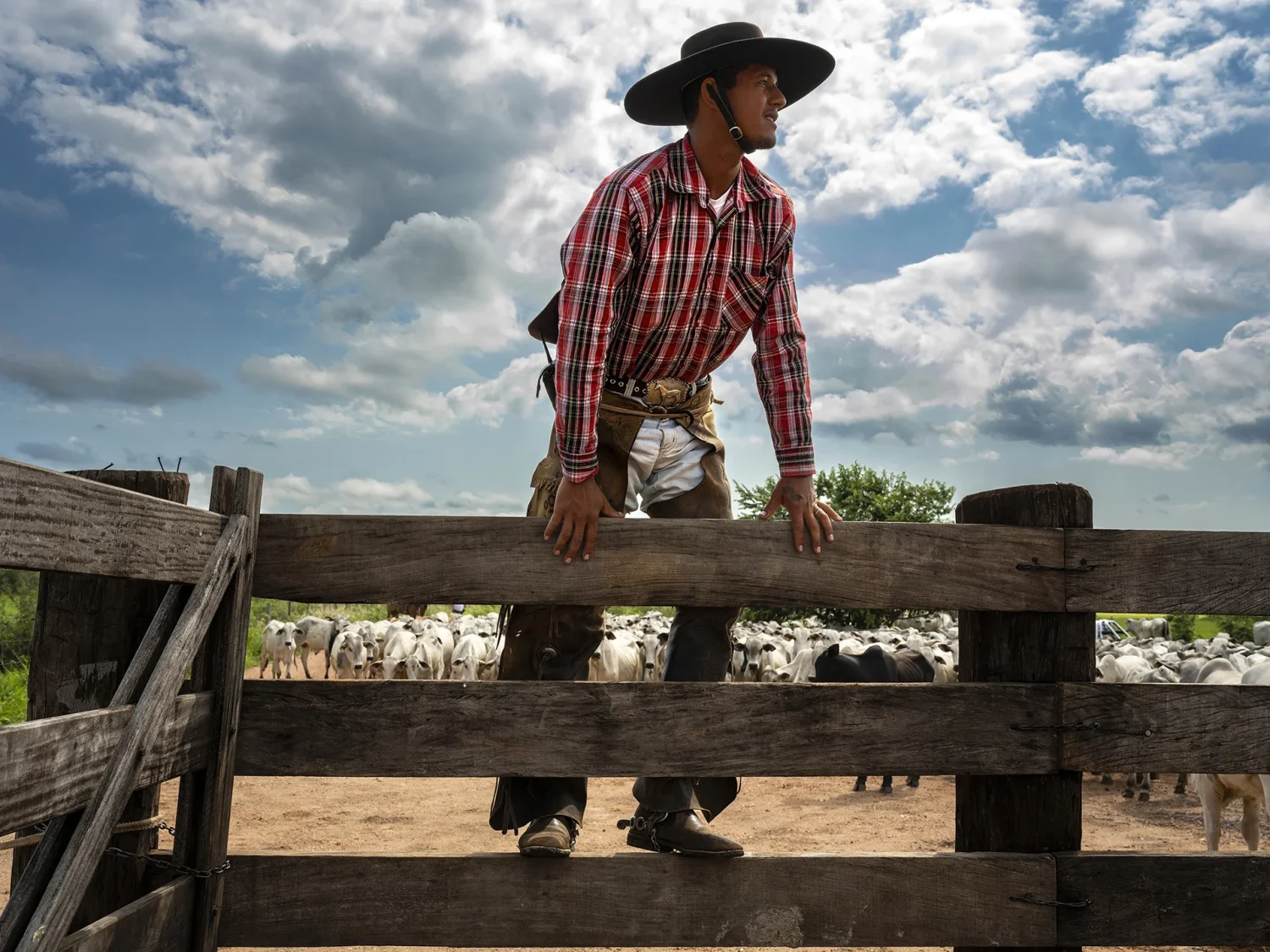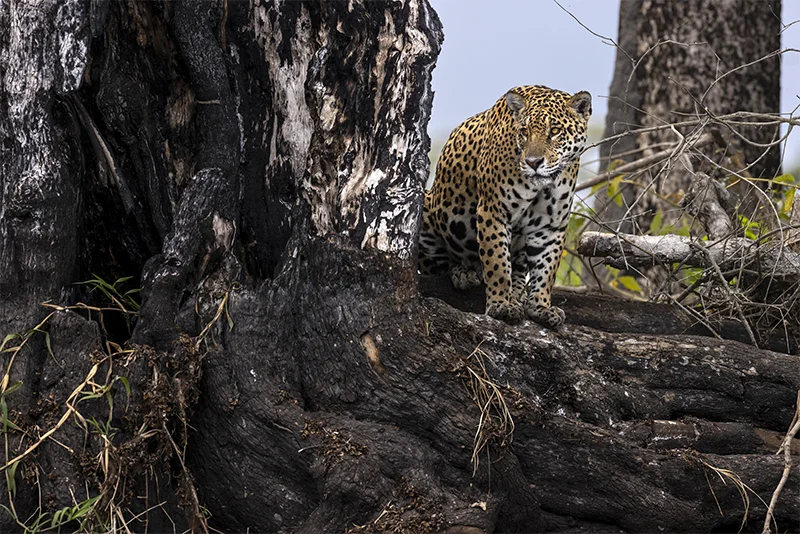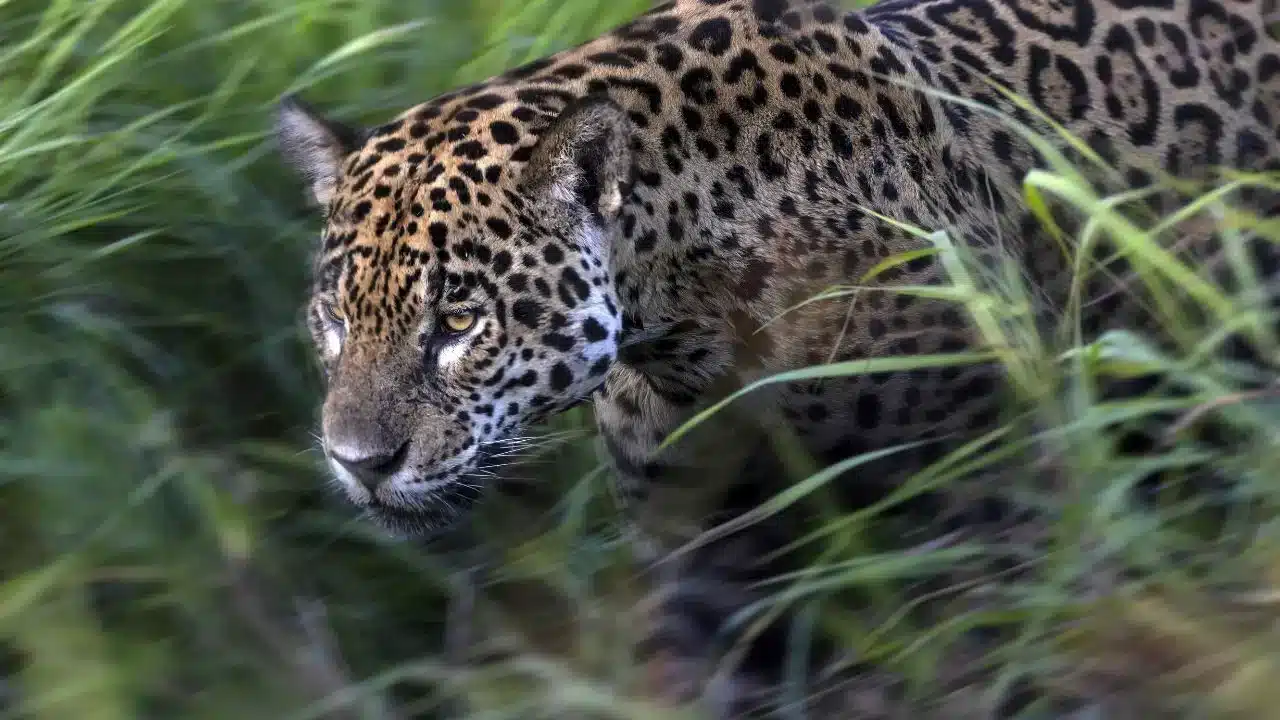An exhibition demanding change for Brazil's Pantanal
The Pantanal isn’t well know among the general public even though it is the largest wetland on the planet, nestled in the heart of South America to the south of the Amazon rainforest. This haven for biodiversity has been hit by accelerating global warming, poor management of agriculture and waterways, and gold mining.
Through the photography project “For Biodiversity’s Sake” launched by the Yves Rocher Foundation, the photojournalist Brent Stirton gives us a comprehensive sense of the problems plaguing this heaven-on-Earth, as well as the solutions that some people are trying to implement to protect its ecosystem.
The planet's largest wetland
An inland sea in the heart of Brazil
When the Pantanal first appeared in explorers’ writings, they referred to it as the “Sea of Xararès”. When they reached the edge of the world’s largest wetland in the 16th century, the Europeans believed they had found the shores of an inland ocean in the South American continent. They named it Pantanal, after one of the tribes they encountered in the area. In fact, it is one of the planet’s largest wetlands, and it stretched out before their eyes for more than 200,000 km² (the equivalent of the total surface area of Senegal).
To understand the Pantanal, you have to see it breathe
We can do just this by getting the kind of perspective satellite imagery offers. The Pantanal is arid in the dry season, its labyrinthine desert valleys dotted with occasional water sources that draw in local wildlife, but eventually it transforms into a bog of intertwining rivers and stretches of water bordered by lush vegetation. Viewed from the sky, it is a gigantic area that fills with and then drains water, over and over again, year by year for millennia. As a result, no roads can get across the Pantanal, with the exception of the Transpantaneira, which links Porto Jofre to Poconé over a stretch of 147 kilometres of land and no fewer than 125 wooden bridges.
A heaven-on-Earth under real threat
Devastating forest fires
Although it wasn’t well known to the general public, the Pantanal made headlines when, in 2020, it was ravaged by fires which raged on an unprecedented scale, killing millions of animals. Dramatic as they were, the fires actually weren’t the cause of disruption to the area’s ecosystem, but a consequence. One factor behind it was, of course, the acceleration of global warming caused by human activity. However, other phenomena have also weakened this ecologically essential region that interconnects with the Amazon rainforest, the Atlantic forest and the Cerrado savanna. The Pantanal has already lost 29% of its original surface area since the 1980s.
Endless deforestation
Massive deforestation in the Amazon rainforest is a scourge that forces profound changes to the water cycle and dries up the “flying rivers” that feed the Pantanal. Most of the water that goes into the wetland gets there via the air and triggers heavy rain throughout the region. As the Amazon rainforest is slaughtered, we are seeing a drastic decrease in the amount of water available to evaporate and create rain for the wetland.
A fragile balance disrupted by agriculture
The main driver behind this issue lies in the most important part of the region’s economy: agriculture. One of the Pantanal’s more unusual features is that 93% of it is made up of private properties. This fragmentation makes it a much more difficult to protect and regulate than a nature park or a single reserve. Brazil is one of the largest producers and exporters of many foodstuffs, especially soybeans and beef. While the vast majority of the Pantanal is now devoid of any human life, farms and ranches are eating into more and more space – and putting considerable pressure on natural resources such as rivers and vegetation.

Humans are still having too great an impact
The pressure exerted by human activity is not likely to diminish as, in 2022, the Mato Grosso state government passed a law which relaxes farming regulations. The problems stem from farms’ intensive approaches and size, as well as new practices that have massively disrupted the region, such as the artificial water channels dug out to irrigate rice fields and soybean plantations. Officially, these are illegal inside the Pantanal. But as our enquiry demonstrates thanks to Brent Stirton’s photos, homeowners are taking advantage of a legislative vacuum that allows them to retain irrigation channels at the wetland’s official boundaries.
A refuge for the animal world
The Pantanal: a treasure trove of biodiversity
Most sources agree with estimates that more than 4,700 different species live in the Pantanal, making it one of the most diverse ecosystems on the planet located in its largest wetland. Due to its geographical placement and its role as a nature corridor to several other biomes, the Pantanal has virtually no endemic species.
However, it does provide a habitat for almost 160 mammals, including the legendary jaguar, the only member of the Panthera family on the American continent.

And then there’s the jabiru, a large wading bird from the stork family with a characteristic big red mark at the base of its black neck. This ornithologists’ wonderland is also the last sanctuary of the hyacinth macaw, the rarest parrot in the natural world with fewer than 3,000 specimens.
In terms of reptiles, the Pantanal doesn’t have any crocodiles or alligators, but it does have caimans. What is marks three species apart, you ask? All belong to the Crocodilia order, but the crocodile is from the Crocodylidae subfamily, while the other two are from the Alligatoridae. The Pantanal has one of the largest populations of these reptiles in the world, providing a home for 10 million specimens. In September 2022, a video showing thousands of caimans on a beach caused quite a stir online – even though this is perfectly normal for the area.
Who is Brent Stirton? What is his background? Find out more.



